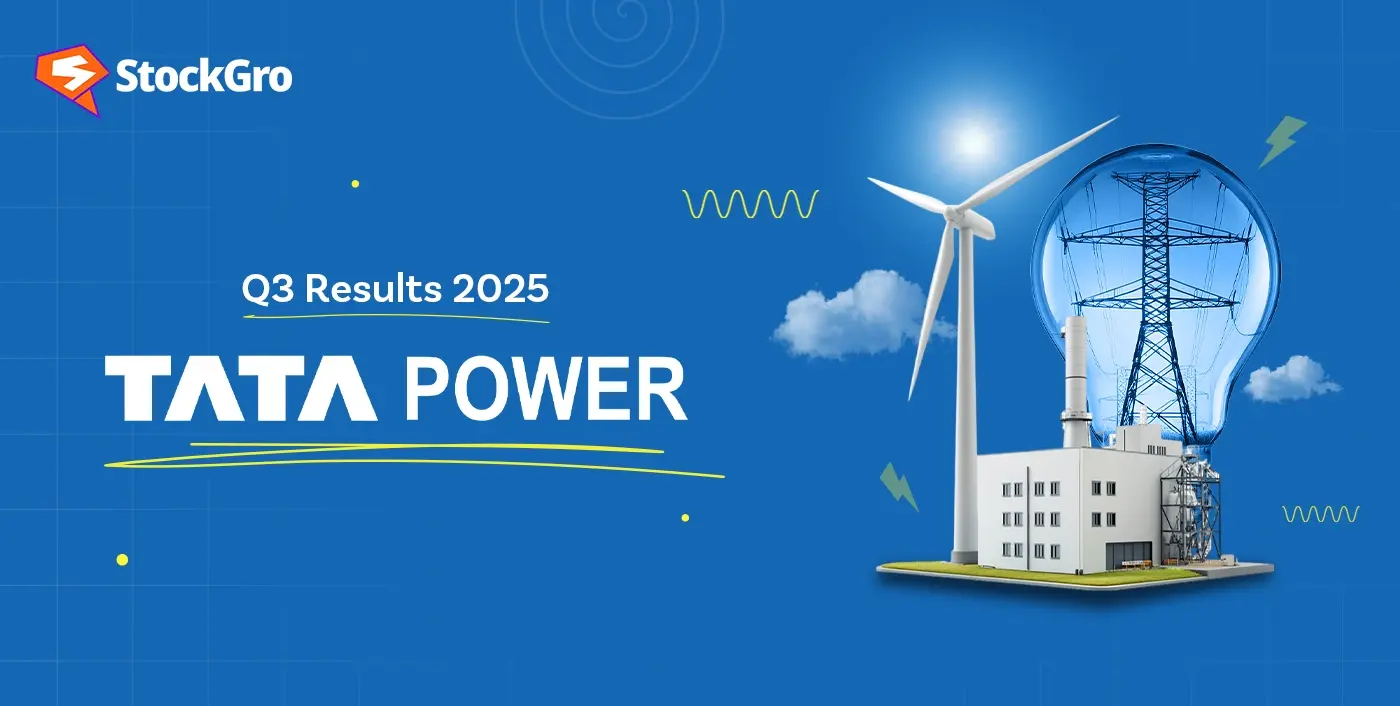
Tata Power, one of India’s largest integrated power companies, has announced its Q3 FY25 financial results, reporting a solid 10% year-on-year (YoY) growth in net profit. This consistent upward trajectory in earnings comes on the back of robust performance across generation, transmission, distribution, and renewables. Let’s break down the numbers, key business highlights, and what this means for investors and the energy sector.
Tata Power Q3 FY25 at a glance
| Metric | Q3 FY25 | Q3 FY24 | YoY Growth |
| Net Profit | ₹1,187 crore | ₹1,076 crore | 10% |
| Revenue from Operations | ₹15,391 crore | ₹14,651 crore | 5% |
| EBITDA | ₹3,352 crore | ₹2,413 crore | 39% |
| EBITDA Margin | 21.80% | 16.50% | +500 bps |
| Renewables PAT | ₹214 crore | – | 59% Growth |
(Source: Tata Power Q3 FY25 Earnings Report)
Tata Power has once again exceeded market expectations, demonstrating resilience in both traditional and renewable energy businesses. Despite facing regulatory losses of ₹274 crore, the company has successfully maintained an upward trajectory in earnings.
Also read: Castrol India Stock Rises 9% After Impressive Q4 Results
Strong revenue and profit growth
The company reported a 10% YoY increase in net profit, reaching ₹1,187 crore in Q3 FY25, compared to ₹1,076 crore in the previous year. Revenue from operations also saw a 5% increase, growing from ₹14,651 crore to ₹15,391 crore.
A major highlight was EBITDA, which surged 39% YoY to ₹3,352 crore, supported by higher operational efficiency and strong margins. The EBITDA margin expanded to 21.8%, an increase of over 500 basis points from 16.5% last year.
Tata Power continues to outperform analyst expectations, as Zee Business had anticipated a net profit decline of 11%, but the company instead posted a strong 10% increase.
You may also read: Railway Stocks Drop After Budget: RVNL, IRFC and More
Renewables business shines
Tata Power’s renewable energy business has been a key driver of growth. The PAT (Profit After Tax) for renewables jumped by 59% during the quarter to ₹214 crore, highlighting the company’s increasing focus on clean energy solutions.
Also read: Bharat Electronics Stock Rises 4% – What’s Fueling the Rally?
| Renewable Energy Metrics | Figures |
| Installed capacity | 6.7 GW |
| Pipeline capacity | 10 GW |
| Total renewable portfolio | 16.7 GW |
CEO and MD Praveer Sinha reiterated the company’s commitment to scaling up green energy, positioning itself as a market leader in clean energy solutions. Tata Power is also actively considering investments in small modular nuclear reactors, following the recent amendments to the Nuclear Power Act.
Investments in transmission and distribution
The Transmission & Distribution segment continues to perform well, with PAT rising by 7% to ₹370 crore. The segment benefited from over ₹3,000 crore in capex investments in 9MFY25, primarily for upgrading infrastructure in Odisha, Delhi, and Mumbai.
The company is also rapidly expanding its EV charging network, having crossed 1,20,000 home chargers and 1,156 e-bus charging points across the country. This aligns with India’s push for sustainable mobility.
You may also read: Waaree Energies Stock Jumps 14% on Strong Q3 Performance
Manufacturing updates
Tata Power’s Tirunelveli plant in Tamil Nadu has fully operationalized its 4 GW cell line, and an additional 300 MW TOPCon line is set to be commissioned in Q4 FY25. The manufacturing unit reported a topline of ₹1,300 crore and a net profit of ₹112 crore for the quarter, further contributing to the company’s profitability.
Also read: Best Green Energy Stocks to Invest in India for 2025
Stock market reaction
Ahead of the earnings announcement, Tata Power’s stock closed at ₹362.15, up 2.06% on the BSE. Investors responded positively to the company’s strong financial performance, particularly in renewables and core power segments.
The road ahead
With a strong financial position and a clear focus on clean energy, Tata Power is well-positioned to scale its green portfolio and take advantage of India’s energy transition. The company aims to achieve 30 lakh solar installations by 2030 under the PM Surya Ghar Yojana, reinforcing its commitment to sustainability.
Looking ahead, factors that will influence Tata Power’s future performance include:
- Government policies on renewable energy and nuclear power.
- Expansion of EV charging infrastructure.
- Growth in the distribution and transmission business.
- Execution of new clean energy projects.
Tata Power continues to be a formidable player in India’s power sector, balancing profitability with sustainability while leading the charge in India’s renewable energy transition.

